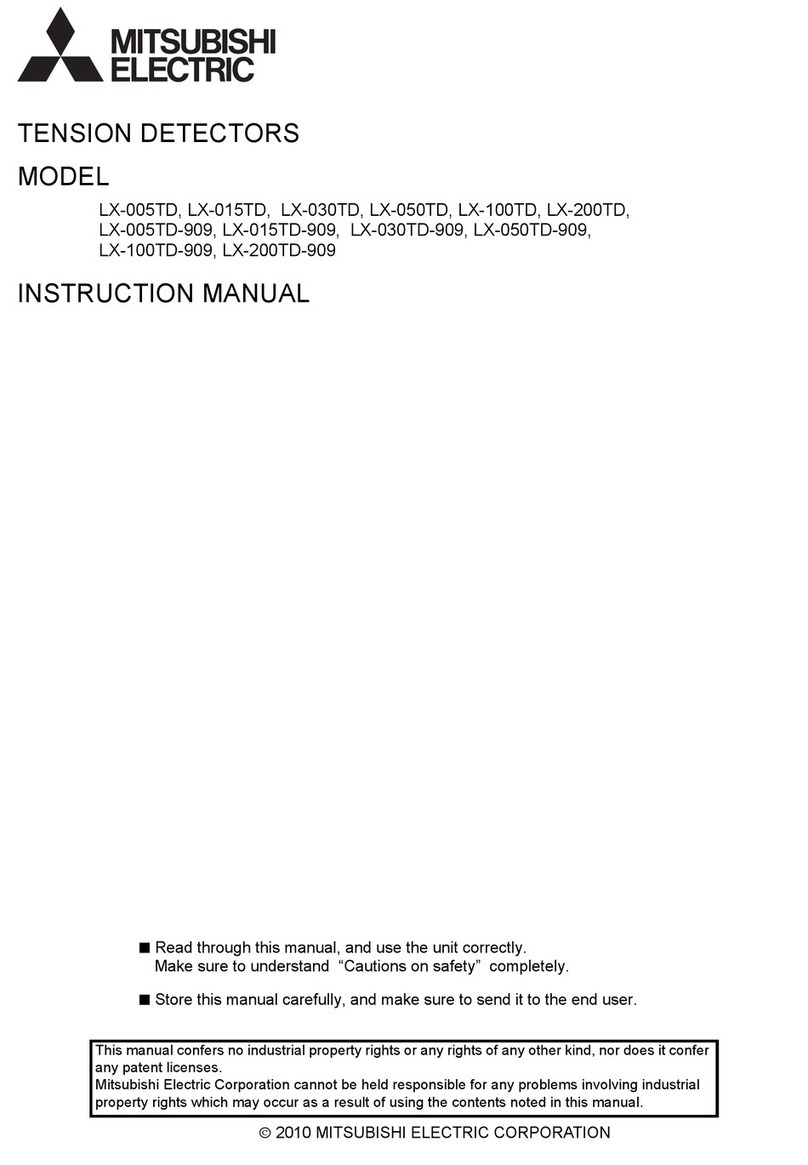
Installation and operation manual
KSGD02 Revision: 1.4
Before installation
Caution:
Do not install the unit where combustible gas may leak.
If the gas leaks and accumulates around the unit, an explosion may result.
Ground the unit.
Do not connect the ground wire to gas or water pipes, lightning rods, or telephone ground lines. Improper
grounding may result in electric shock.
Install the power cable so that tension is not applied to the cable. Tension may cause the cable to break and
generate heat which may, in turn, cause fire.
Install a leak circuit breaker, as required.
If a leak circuit breaker is not installed, electric shock may result.
Use power line cables of sufficient current carrying capacity and rating.
Cables that are too small may leak, generate heat, and cause a fire.
Use only a circuit breaker and fuse of the specified capacity.
A fuse or circuit breaker of a larger capacity or a steel or copper wire may result in a general unit failure or fire.
Be very careful regarding product transportation.
Two people should be used to carry products of 20kg or more.
Some products use PP bands for packaging. Do not use any PP bands for a means of transportation.
Safely dispose of the packing materials.
Packing materials, such as nails and other metal or wooden parts, may cause stabs or other injuries.
Tear apart and throw away plastic packaging bags so that children will not play with them - If children play with a
plastic bag which has not been torn apart, they face the risk of suffocation.
Before starting a test run
Caution:
Do not touch the switches with wet fingers.
Touching a switch with wet fingers can cause electric shock.
Do not touch the refrigerant pipes during and immediately after operation.
During and immediately after operation, the refrigerant pipes may be hot or cold, depending on the condition of
the refrigerant flowing through the refrigerant piping, compressor, and other refrigerant cycle parts. Your hands
may suffer burns or frostbite if you touch the refrigerant pipes.
Do not operate the air conditioner with the panels and guards removed.
Rotating, hot, or high-voltage parts can cause injuries.
Do not turn off the power immediately after stopping operation.
Always wait at least five minutes before turning off the power. Otherwise, water leakage and other problems may
occur.
Disclaimer
Warranty:
All products manufactured on behalf of Mitsubishi Electric UK are warranted against defective materials for a period of three
years from the date of delivery to the original purchaser.
Warning:
Mitsubishi Electric UK assumesno liability for damages consequent to the user of this product. We reserve the right to change
this manual at any time without notice. The information furnished by us is believed to be accurate and reliable. However, no
responsibility is assumed by us for its use, nor for any infringements of patents or other rights of third parties resulting from
its use.

































